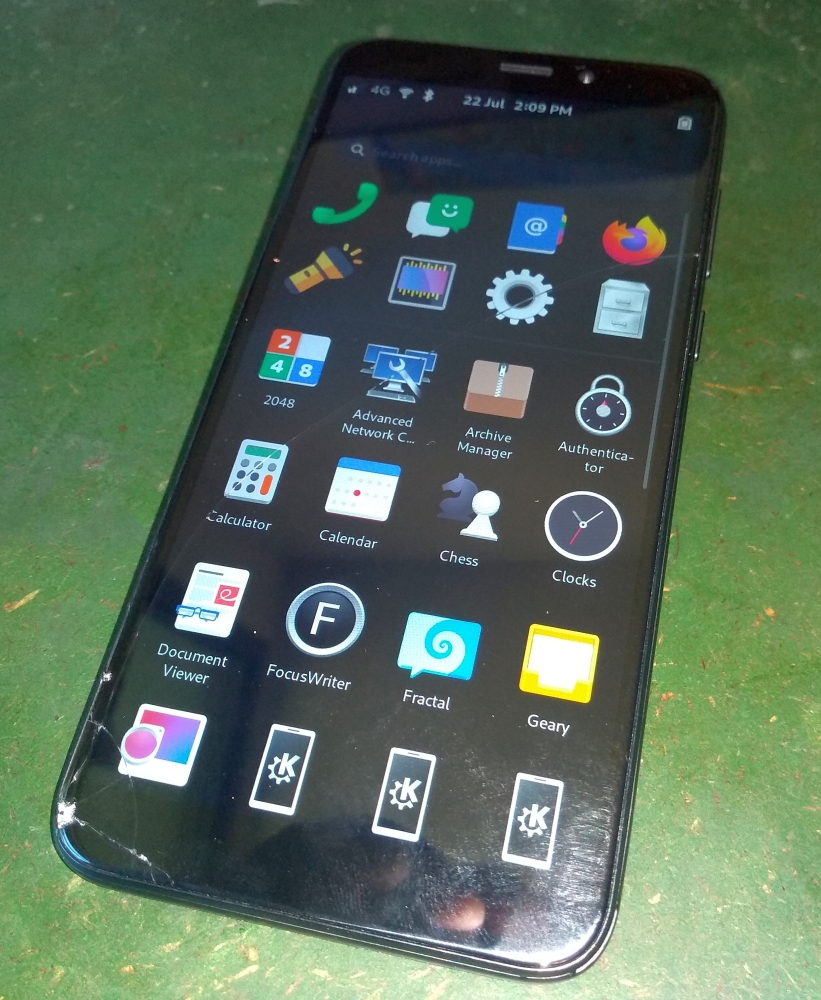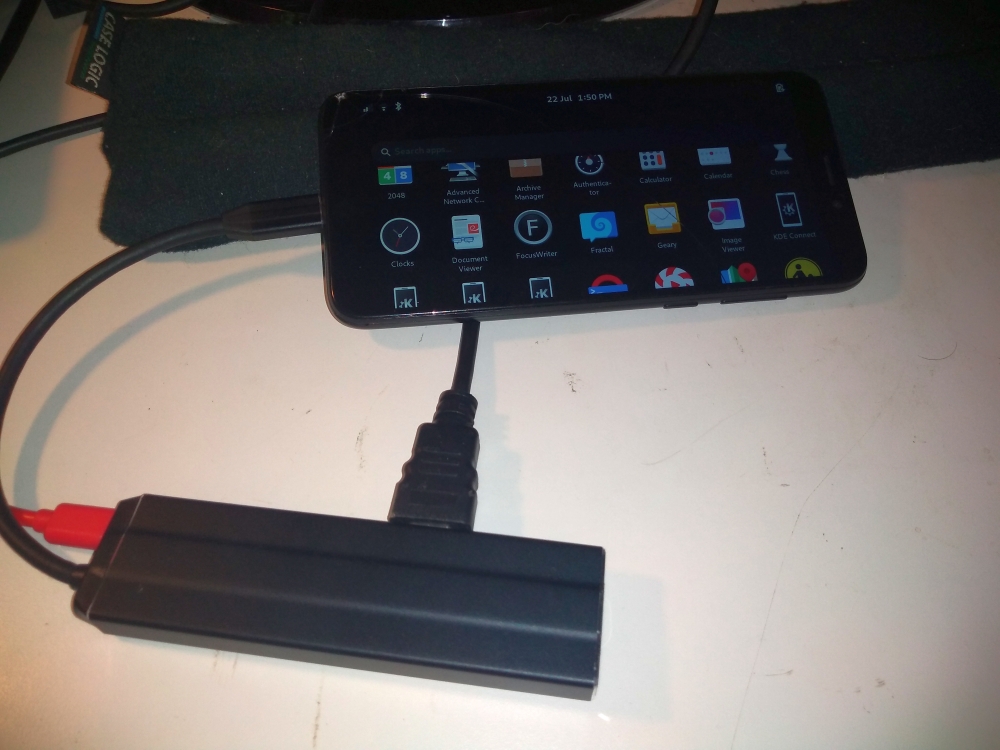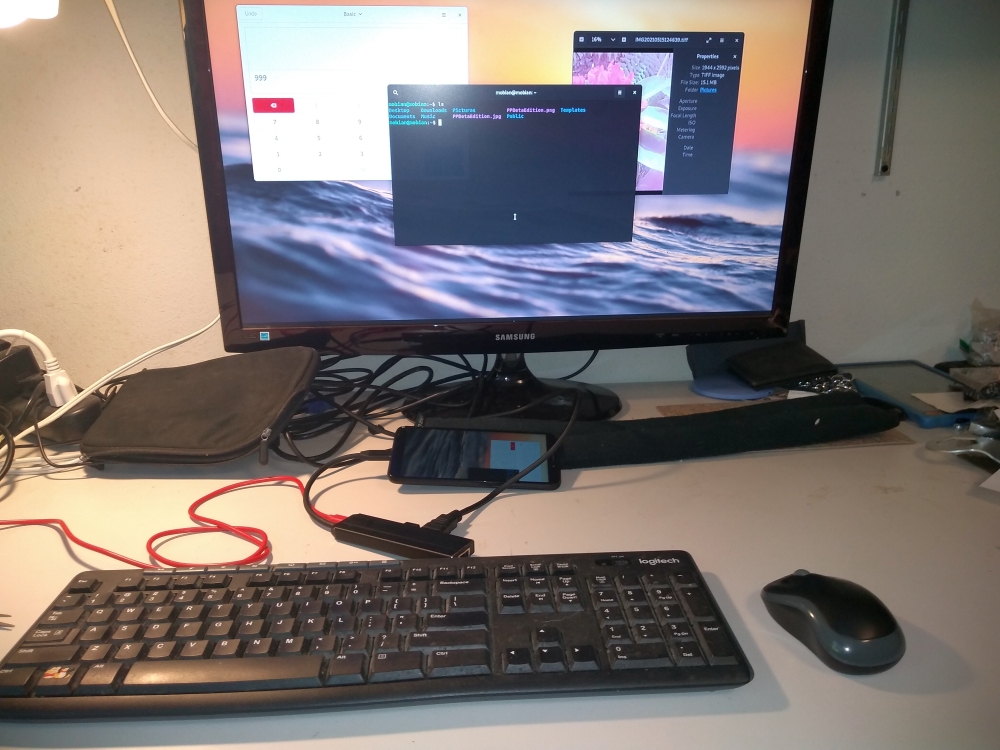Introduction:
I have been playing with a PinePhone, specifically the “PinePhone Beta Edition with Convergence Package Linux Smart Phone” according to their website.

The company, known as Pine64, describes itself as “a community-driven company focused on creating high-quality, low-cost ARM devices and, more recently, RISC-V devices for individuals and businesses around the globe.” They make a wide variety of devices, including computer components and accessories, single-board computers, ARM-based laptops, tablets, a smartwatch, a soldering iron…
One focus of Pine64 has been developing an open-hardware smart-phone that will run Linux and other operating systems that are not necessarily developed by Google, Apple, or Microsoft. As a long-term Linux user, I was interested in Linux on a phone but put off by the difficulties of putting Linux on a commercial phone, including finding a compatible device, “rooting” the hardware to allow me to put the software on it, finding the software version that would work, and so on.
See https://www.pine64.org/ for more information about the company and https://wiki.pine64.org/wiki/PinePhone for more about the PinePhone.
Obtaining the PinePhone:
You order a PinePhone from Pine64’s web page. They do business a little bit differently than other companies. When you make an order, it goes into a queue and when they have enough orders based on some number they have in mind they ship a bulk order to a major destination and then ship the individuals from there. So the shipping time can vary quite a bit – my phone took about 4 weeks.
Visit the PineStore at https://pine64.com/ for details.
Hardware:
As much of the hardware as possible is open source. This means the designs are available and nothing legally stops another party from building it. It comes with six physical privacy switches that allow you to actually turn off various parts of the hardware (as compared to just telling the software to turn it off, and trusting the software to do so). These switches are for the cellular modem, WiFi and Bluetooth, microphone, rear camera, front camera, and headphone. This allows a privacy level unheard of in major commercial phones.
The PinePhone is “rooted” from the factory. In other words, the user can put operating systems on it without hacking. In general, it has fairly low hardware specs compared to modern “flagship” phones like the iPhone 11 or Samsung Galaxy S21. The PinePhone is clearly for a different market than those phones. If you want flashy hardware and the latest features, stay away from the PinePhone. However, it’s the phone for you if you want to be able to run an independent operating system, control the hardware, hack and experiment, and have full control over privacy.

Operating Systems:
The PinePhone comes with internal memory which can be used for the operating system. There is also MicroSD slot that also can be used to boot the operating system, like some computers but unlike any other phone I can think of. This makes it very easy to try different operating systems.
There are already around 20 available operating systems, most being derivations of Linux or Android. Users may find that some operating systems fit their needs better than others.
On the graphical desktop many Linux programs will work, especially if they have a somewhat low demand for resources. I even got LibreOffice to run – though not well! Using Linux-based systems also means that PinePhone users can open a terminal window and work from the command line.
Specifications:
Briefly, the edition I have is about the size and weight of an iPhone 11, has a 6-inch 1440×720 display, 3Gb of RAM, and a 2800 mWa battery. This model comes with a version of Manjaro Linux installed, with a desktop based on KDE. It also includes a nifty little USB-C docking station that can connect to an external monitor, wired Ethernet, power, USB3, and other things. Using the docking station, the phone can drive an external display up to Ultra-HD (3840×2160 display).
You can also get a less expensive edition that has only 2GB of RAM and does not include the USB-C docking station.
Full specifications at: https://wiki.pine64.org/wiki/PinePhone#Specifications.
First Impressions:
When I am ready, I will be posting another entry on detailed use of the PinePhone, so I’ll be brief here.
- Software availability is still somewhat limited. For example, you won’t find an app for your bank or coffee shop!
- Each of the available operating systems is unique and has a different level of development, so you should try several.
- Software capabilities are also somewhat limited. The chat app can’t accept images, and the camera app takes mediocre pictures at present.
- Cellular, WiFi and Bluetooth connectivity work as expected.
- The USB-C Docking Station works great, even on my laptop.
- Driving an external monitor works well from a hardware standpoint, but integration of the screen on the phone with the external one takes some fiddling.
- External keyboard and mouse work fine.
Bottom line? This device is a lot of fun, but it’s not ready for being your daily-use cellphone unless simple calls and basic pure-text messages are all you require, and you are ready for some hacking.

Recent Comments